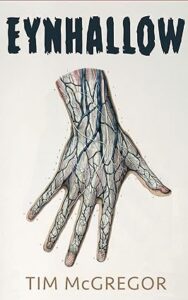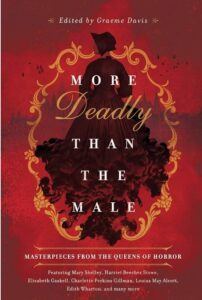His Unburned Heart (Selected Papers from the Consortium for the Study of Anomalous Phenomena #1) by David Sandner
Raw Dog Screaming Press, 2024
ISBN-13 : 978-1947879768
Available: Paperback
Buy: Bookshop.org | Amazon.com
His Unburned Heart is the first in a series of novellas connected by a frame story of being published by the fictional Consortium for the Study of Anomalous Phenomena. Monster Librarian has previously review volume 2, 12 Hours, and volume 3, Asylum. They’re all very different in tone, topic, and style: what they have in common is that each is about an inexplicable change to reality.
The first half of His Unburned Heart is a novella of the same name, and a reasonably straightforward piece of historical fiction. Prior knowledge of the people and events is helpful in providing context. Mary Shelley is well known as the author of Frankenstein. She lived an unconventional life as a young woman, marrying the notorious Romantic poet Percy Shelley.. He and a friend set off sailing into a major storm over Mary’s objections, and disappeared. Their bodies were washed ashore much later. Italian laws about contagion meant that Percy’s body would have to be burned, but Mary, as a woman, was not allowed to come. Instead, his publisher Leigh Hunt, and their friends Edward Trelawney and Lord Byron attended. After the body had burned, Trelawney saw that Shelley’s heart had not burned away and pulled it out of the ashes. Leigh Hunt left with Shelley’s unburned heart. Those are the facts.
Sandner’s novella has Mary determined to witness Percy’s cremation regardless of what the law says. She goes to her friend Mrs. Mason, who disguises her as a man, allowing her to pose as one of Lord Byron’s footmen (Lord Byron sees through the disguise but says nothing). On seeing that Leigh Hunt has kept Percy’s heart, she visits and demands it back, but he refuses, so Mary enlists her stepsister Claire into helping her break in and steal the heart (Mary had a complex relationship with Claire, with a history that is only obliquely referred to: Sandner captures this in just a few lines). Sandner’s spare style uniquely draws characters whose thoughts can’t be guessed, such as Lord Byron.
The second half of the book is titled “The Journal of Sorrow”. In it Mary first recounts the weeks and days before Percy left on his trip, including a vivid description of a miscarriage where she nearly bled to death before a doctor could arrive at their isolated home, Percy’s intervention of bathing her in freezing water saved her life. The depiction of her miscarriage, bleeding, and freezing, is terrifying and has a visceral impact.
This prologue is followed by a series of dreams or imaginings of Percy’s last hours: In her journal, Mary writes, “Some stories cannot be told except as fragments, as dreams, fits… I hold them out to you–dead leaves to quicken some new birth…” These short fragments all approach his drowning and death from different imagined angles, and somehow this unconventional, stream-of-consciousness style of writing becomes not only a series of strange encounters with Shelley and the deep, but a shape of Mary’s feelings about him. I found The Journal of Sorrow and its intense, brief, and dreamlike writing to be an incredibly powerful expression of imagination, guilt, grief, anger, regret, and love.
His Unburned Heart does require background knowledge to be fully appreciated, but this is a perfect Valentine’s gift for the horror lover, and for those readers especially interested in the lives of Mary and Percy Shelley this is a treat. Recommended.
Reviewed by Kirsten Kowalewski







Follow Us!